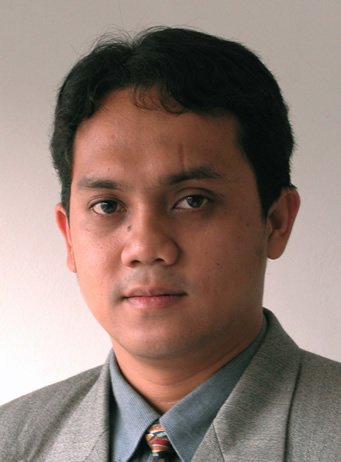Places at the table - Influences in Educational Media and Technology

This seri of 7 pictures is a caption of Educational software that I am working on. The title of the software is "Places at the table - Influences in Educational Media and Technology". In the software, the setting is a formal dinner among influential people in EM&T. The student is going to organize the dinner by identifying the invitees to the dinner and proposing a subject to discuss during the dinner.


This software consists of two process. The first one is how the software is presented before the learner in order to help the student structuring the information. The first process is intended to support the process in the classroom. The second one is the classroom process. The second process is supposed to help the students producing new knowledge by sharing in class what they have understood so far. This approach is based on Saettlers remark that product must support the process.
The software is used at the last session of EM550 class - Introduction to Educational Media and Technology. By this time, student must already finish reading all the course material and complete Saettler's book. The instructor must assign the student to use the software before coming to the class and bring the printed output of the activities from the software.


In order to do so, student will be doing three subcategories of activities before inviting the guests and deciding the topic of discussion. The first subcategory will be a lesson in some basics concepts and several lessons to fill in information in the timeline. The first subcategory lessons are laid out in the following frameworks. Student will be given the objectives and instruction of the lesson. It is then followed by motivating strategy. The motivating strategy can be in the form of quotation, video, or illustration. The motivating strategy is an approach based on Weber methodology in order to prepare the student to go about the presentation. The next activity, student will be presented by two questions for each information in the timeline presentation. The first question will recollect student's memory about that information.


The second question will be asking the student to make more value of that information by commenting or choosing the right comment. All these interaction will be recorded in the timeline for later analysis by the students.

.1.jpg)
By the time the student finishes the first subcategory, the student will be challenged to simulate pattern by making connection among information by using arrows in the second subcategory activity. Student can name the connecting arrow with keyword that reminds the student of what that arrow represents.


In the last category, students will be given some problems to review the whole activities. In this last activity, student will be asked to recognize the influential people in the influential field in EM&T by making the list of invitees using summative problems. At the end of the third subcategory, students will be presented with the most important element that often be left behind and neglected in developing EM&T, who is the teacher.

Classroom Process
At this point, student will already be refreshed with key information which was presented through out courses. Refreshing students with key information is one of the objectives of the software especially for the students who have taken the course. Student will bring his/her pre-conception about the pattern in his/her mind and a printed visual aid to help him/her sharing it with the rest of the class.
With that in mind, the classroom activity will mainly about sharing and making inferences from the information shared by classmate. The following is the process format.
The objective of the classroom discussion is that to make students aware of changing perception and definition towards technology through out history. How the perception and definition change also transform the approach and implementation of technology in the classroom. This transformation is called paradigm. The student should be able to identify the pattern of the paradigm and be able to predict the future paradigm.
After being presented with the objective, the student will be presented with motivating strategy. In the software, the student will be notified that the real dinner is this class, therefore in this motivating stage; student will be asked what they will talk about if they are among the invitees. The instructor will elicit student’s timeline in this discussion at this stage.
Then students will work in pairs (or in groups) to share their timelines. Each group or pair will be asked to come up 5-10 statements that summarize the groups understanding about their timelines and write it down in the white board.
Based on the writings on the white board, student will be asked to draw conclusions by answering the following questions which are geared by the instructor:
What was the very first description of technology (Thames)? How it is changed over the periods? What is student’s definition of technology?
When was the first implementation of technology in classroom? How it is changed over the periods?
What is paradigm? Can the students see any paradigm shifts in their timeline?
Based on the pattern that changes the paradigm, what is students’ prediction toward the future paradigm in EM&T?
Conclusion
By asking the student to play with the software before coming to the class, students will be ready to discuss more about the pattern. Their minds have been engaged by the activity in the software. The visual aid will have the student by giving visual cues to what they have learnt from the software. They can use it to share it with other student and evaluate whether there is similarity in the patterns they created. They can add each other and finally make conclusion out of it.


0 Comments:
Post a Comment
<< Home